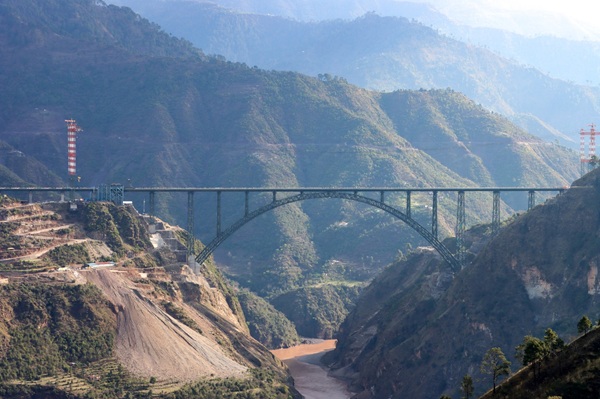.png)
India’s Costliest Bond Faces Clock as Tata Talks Advance
Shapoorji Pallonji Group’s talks to sell its Tata Sons stake could erase India’s costliest bond burden, but valuation and time pressure make it a cliffhanger.


Krishnadevan is Consulting Editor at BasisPoint Insight. He has worked in the equity markets, and been a journalist at ET, AFX News, Reuters TV and Cogencis.
August 11, 2025 at 12:58 PM IST
Investors who backed the Shapoorji Pallonji Group’s eye-watering 19.75% zero‑coupon $3.34 billion bond issue finally have something to steady their nerves. It may be more reprieve than rescue.
The news that Tata Sons and the Group have begun formal talks over Shapoorji Pallonji’s 18.37% stake exit marks the most realistic route yet to monetising the group’s most valuable, yet stubbornly illiquid, asset. For lenders staring down a 2028 bullet repayment — principal, plus four punishing years of interest pile up — in the unforgiving world of high‑yield debt, that matters.
This is no ordinary borrowing. The $3.34 billion bond raise, India’s largest private credit deal, was arranged by Deutsche Bank and anchored by global heavyweights like Ares, Cerberus, and Davidson Kempner. It is secured against a 9.2% stake in Tata Sons, held by Sterling Investment Corp, and prime real estate, but until now the choicest collateral has been untouchable.
Tata Trusts, wielding nearly 66% control of Tata Sons, have long refused any pledge or transfer of shares.
The Reserve Bank of India recently gave Shapoorji Pallonji some badly needed breathing room, granting Sterling Investment Corp which holds 9.2% of Tata Sons, until June 2028 to meet stricter capital adequacy norms. This wasn’t bureaucratic benevolence; it was a critical covenant in the bond.
Without the extension, Shapoorji Pallonji would have needed to inject ₹60 billion fresh capital by September, triggering a liquidity squeeze far sooner.
The effect of these constraints has been cumulative. With earlier debt rollovers added in, Shapoorji Pallonji ’s effective obligation is now closer to $6 billion. That’s the kind of number that leaves no space for operational missteps.
On paper, Shapoorji Pallonji’s flagship, Shapoorji Pallonji Construction Pvt Ltd, points to a ₹276.64 billion order book and marquee projects from the Atal Tunnel to the Chenab bridge. In practice, the company grapples with fully stretched working capital lines, wafer‑thin 3.2% EPC margins, and a worrying 10% of receivables tied up with other group companies. ICRA’s BBB– rating signals fragility, not financial fitness.
That’s why this glimmer of a Tata exit deal feels significant. Even a partial sale of Shapoorji Pallonji ’s stake in Tata Sons could transform the group’s immediate financial trajectory. The proceeds could retire the entire 19.75% bond obligation in one clean stroke, unshackle the pledged shares, and release capital back into the business where it’s most needed.
More importantly, the group gets freedom from the constant anxiety of cash‑flow firefighting. For bondholders, it promises repayment from a single, predictable, high‑quality liquidity event, not a messy sequence of asset disposals.
But possible solution is not the same as a done deal. Tata Sons is an unlisted company; and its largest shareholder Tata Trusts has resolved to keep it private. So, with an Initial Public Offering ruled out, valuing it is more art than arithmetic.
The Financial Times quoting unnamed analysts, pegs Tata Sons at around $127 billion. Brand Finance separately puts the Tata Group brand at $28.6 billion, crowning it India’s most valuable brand.
Valuing Tata Sons isn’t simple subtraction or spreadsheet sorcery. It’s not a conventional lender, but a labyrinthine holding company invested across a 26-strong listed clan and 300+ subsidiaries. Stakes include star turns like Tata Consultancy Services, Tata Steel, Tata Motors, the owner of Jaguar Land Rover, and soon, truck titan Iveco. More than 95% of net assets are investments and loans to group associates and subsidiaries, according to their latest annual report.
Crucially, this financial drama is unfolding amid a regulatory riddle. Earlier this year, the Shapoorji Pallonji Group formally urged the RBI to back a public listing of Tata Sons, arguing it would benefit all stakeholders and unlock a straightforward exit. Struggling to service substantial debt, the Shapoorji Pallonji Group also voiced frustration at not being informed of Tata Sons’ decision to surrender its Upper Layer Core Investment Company registration with the RBI.
In January, the RBI said it was considering Tata Sons’ application to deregister as a core investment company under upper-layer NBFC norms, which would let it avoid mandatory listing by September. Tata Sons, now a zero-debt giant, aimed to engineer its own escape from this listing leash. All this complicates Shapoorji Pallonji ’s exit pathway and potentially nixes the easy IPO out they’d been angling for.
The RBI had wanted Tata Sons to list by the end of September in accordance with central bank rules that classify it as a major shadow lender.
Arriving at a mutually acceptable number will involve discounts, debates, and more than one stalemate. While negotiators haggle, the zero-coupon clock keeps ticking. Every passing month swells the final repayment figure, turning time itself into the most formidable opponent Shapoorji Pallonji faces.
Seen more broadly, these developments will set precedents for India’s evolving private credit market. For investors, it is a test case of whether large, complex debt structures in India can end with orderly, value‑maximising exits rather than drawn‑out, value‑eroding battles. And as any seasoned lender or borrower knows, in a contest between the clock and the balance sheet, the clock almost always wins.
Company promoters may do well to realise that borrowing big against marquee stakes without a visible, viable exit is no longer shrewd opportunism; it’s strategic recklessness. At least three Indian media company promoters know it for a fact.
In the end, corporate historians will see the Tata-Shapoorji Pallonji saga as a reflection of compounded ambition, of wheels-within-wheels, the tenuous nature of family relationships and a shared heritage clashing over work culture.



